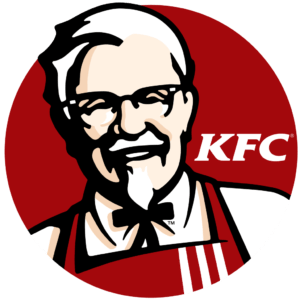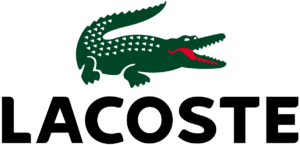When you live in a heavily Westernised part of the world, you’re exposed to an abundance of logos each and every hour, let alone day! Here, in the 21st Century, branding is everything – dictating it all – from our food choices to our holiday destinations.
Logos are such a seemingly small aspect in the marketing mix because we often forget how they actually play the greatest role in terms of brand recognition. Not only do they need to stand the test of time and attract the right audience, they also need to communicate what the business does and symbolise how it operates.
If we ask you to think of three major brands and their logos, what comes to mind? Analyse the different logos and you’ll find that they all give off a different ‘feel’. Some will give off a fun and quirky vibe, others will be simple and sleek, bold and beautiful or intriguing and intricate…
It is safe to say there’s a huge variety of logo types out there, but if you take an even closer look you will notice that there are trends and patterns that can be broken down into sectors and styles. Today we’re going to run you through 7 different logo types, exploring what types of industries use them and more importantly, why.
This article will assist you in curating the perfect brief for your logo, ensuring a graphic designer can bring it to life. So, if you want to know how to choose the best logo type/combination for your business get ready to take notes – we’re about to give you some serious food for thought!
LETTERMARKS

Ah, the lettermark. Otherwise known as monogram logos, this is favoured by businesses with lengthy names. It’s basically just initialisms that are jazzed up for brand identification purposes. Well, we say ‘jazzed up’ but the trick to making lettermarks work is actually simplicity. As this design type is typography-based, the focus is all on clear but clever lettering. Take HBO and NASA, as two great examples. Both are readable and easily distinguishable yet very unique and distinct.
WORDMARKS

Similar to lettermarks, wordmarks are also typography-based. The only real difference is the way the design incorporates the entire business/brand name, instead of just the initials. This logo type works really well for companies that have short, succinct names. Take Google and Coca-Cola as two elite examples – both have memorable names and eye-catching logos. The use of strong colour and custom typography has helped them to deliver their message coherently and obtain brand recognition worldwide.
PICTORIAL MARKS

The graphic based design, referred to ask pictorial marks, logo symbols and brand marks (pick your favourite!) is basically an icon. Chances are, when we asked you to think of some major brand logo’s in the intro earlier, at least one Pictorial mark came to mind. For us the most obvious are the Twitter bird and of course, iconic Apple logo. Both are instantly recognisable and super quirky, but it’s tricky for start-ups to pull this off without establishing themselves first.
Pictorial marks are usually a phase-2 (or 3, or 4) only to be carried out once you’ve developed an influential presence in a particular sector, but can also act as a nice add-on to wordmarks (they look fabulous on social media memes and make great favicons).
ABSTRACT MARKS

Abstract logos poses a truly unique way to represent your brand. The idea behind them is to develop a bespoke geometric form that symbolises your brand, condensing what you do into one single image. Absract logo marks often have text to accompany, either brand initials or the company name – but are designed to work just as well on their own, as a separate entity. The most famous examples of abstract logo marks have got to be Pepsi (you know, the distinctive divided circle), BP (with it’s cool bursting star, or whatever it is – it works…) and Adidas (sporting the freshest flower around).
Abstract logos have proven not to date quickly and instead, blossom over the years. They have become stable signs of home for many, yet cut down language barriers and minimise cultural differences by not relying on text, characters or photos. They’re great for global businesses with a wide audience.
MASCOTS

As we mentioned characters briefly above, it’s worth mentioning how dynamic, interactive and effective brand mascots can be when used in the correct way by the right company. Brand mascots are ideal for those wanting to appeal to families and children, but not so great for corporate cooperations like banks, looking to secure the public’s trust. Places like car washes, food chains and football teams (and people like digital freelancers and self-employed beauty therapists) use this logo type to resemble an ambassador of their business – showcasing personality and encouraging a relationship.
Take KFC’s Colonel as the perfect example. His smart chef attire complete with a bow tie and friendly face with ‘wise man’ features walks the perfect line of professionalism and wholesomeness. He looks approachable but equally knowledgeable. If you’re aiming to present an equal balance of quality and authenticity, a mascot may be the way to go.
EMBLEMS

Logo Emblems tend to have a traditional, entwined appearance. Usually used by schools, government agencies and the auto industry, this logo can make a striking, professional impact. Companies like Starbucks and Harley-Davidson have successfully modernised the classical emblem look to ensure its versatile (/simplistic) enough to be used across boards, on all branding mediums. The key is not to make the emblem too intricate, or it’ll be impossible to see or read when shrunk down and replicated on business cards and letterheads.
COMBINATION MARKS

You guessed it – the name is self-explanatory really, but for the sake of rounding this post up properly, a combination mark is a logo encompassing a workmark or lettermark and a mascot, pictorial mark abstract or mark. There are various ways of laying combination marks out – with the text over the picture, next to the picture, stacked on top of one another, fully integrated to become one… you name it – the options are endless. If you’re looking for inspiration, think Doritos, Burger King and Lacoste, to name just a few…
Combination Marks are probably the most popular of all, as they allow for clarity and creativity, which in turn makes them far easier to trademark than a pictorial or lettermark alone!